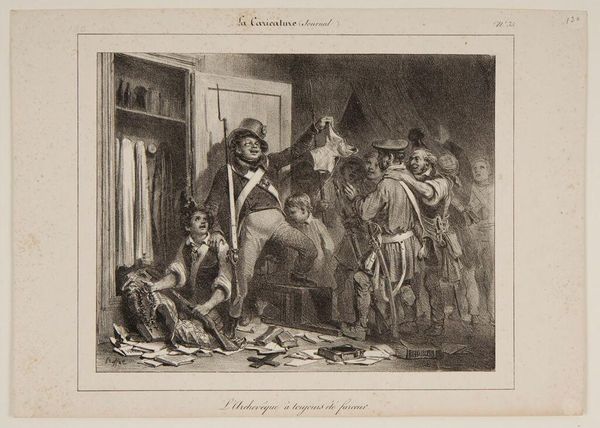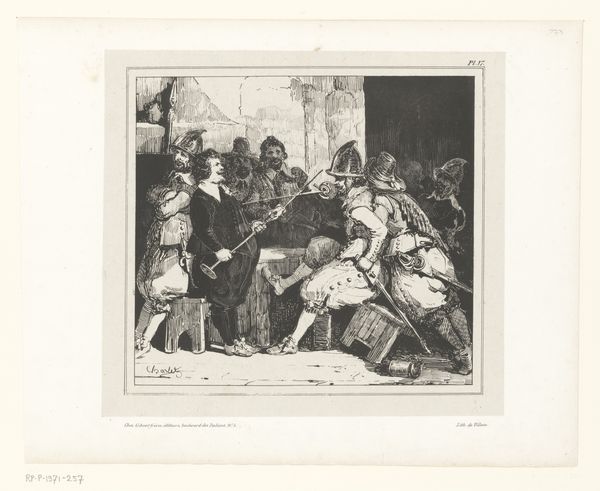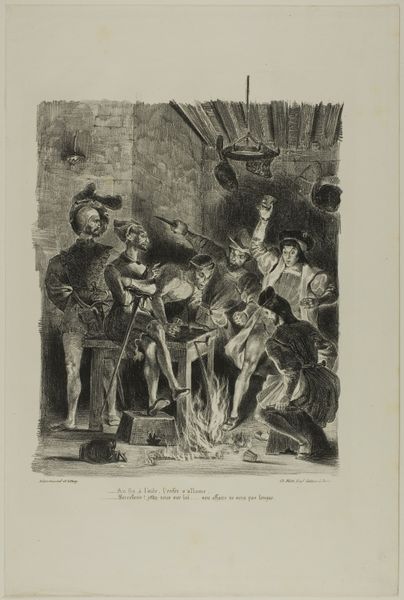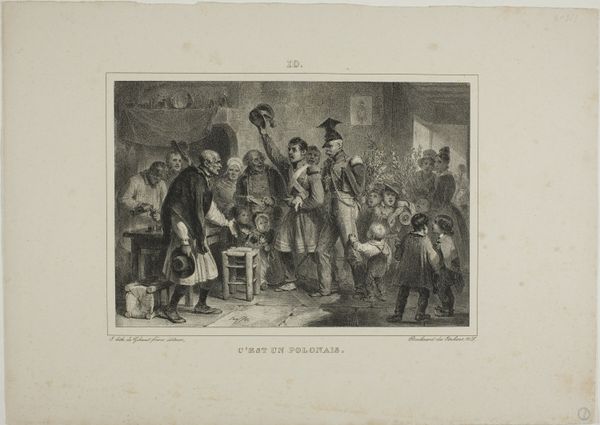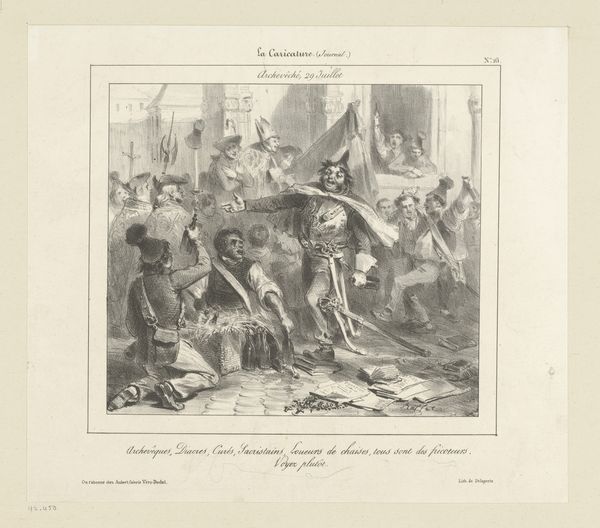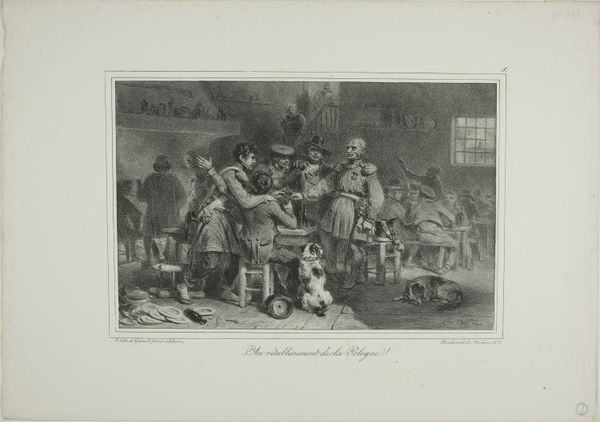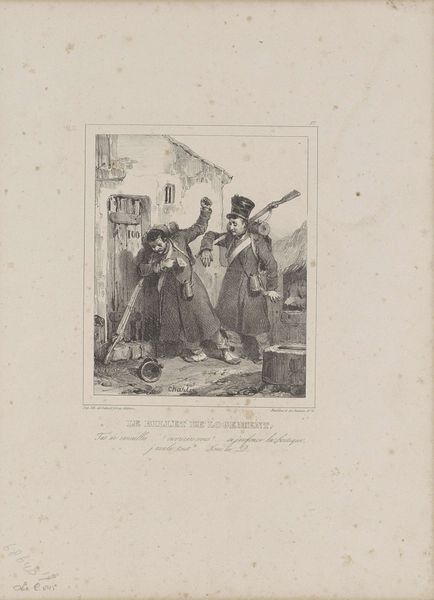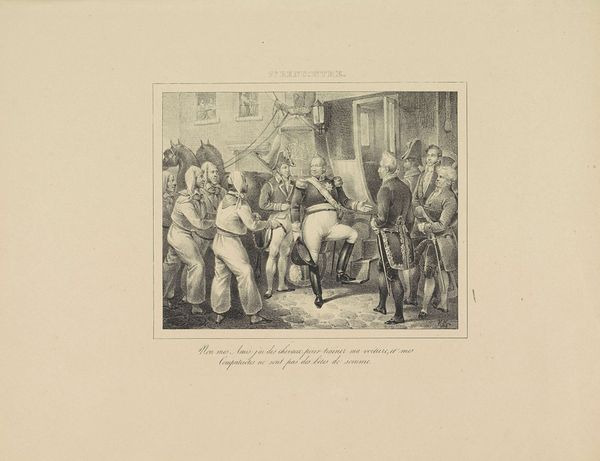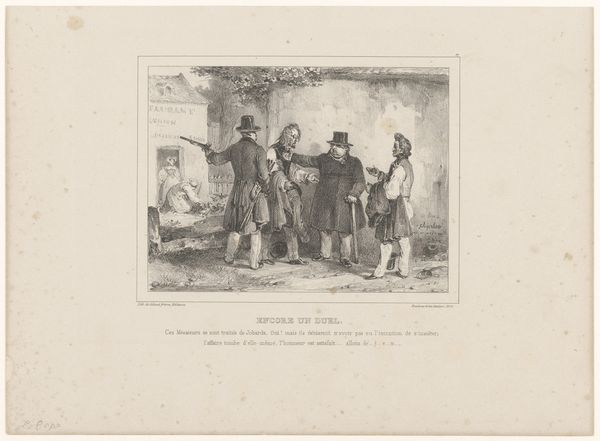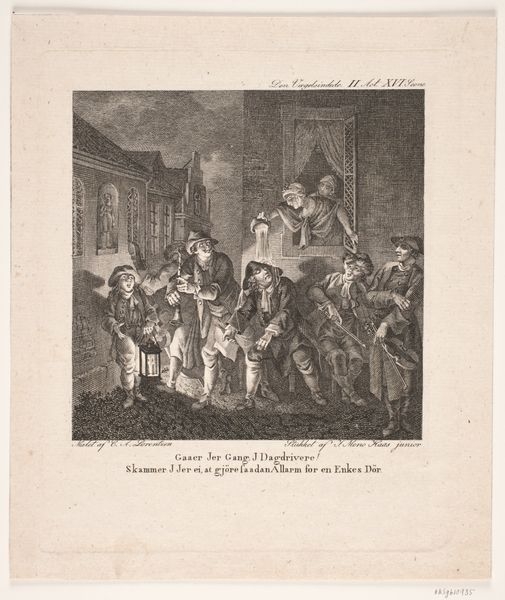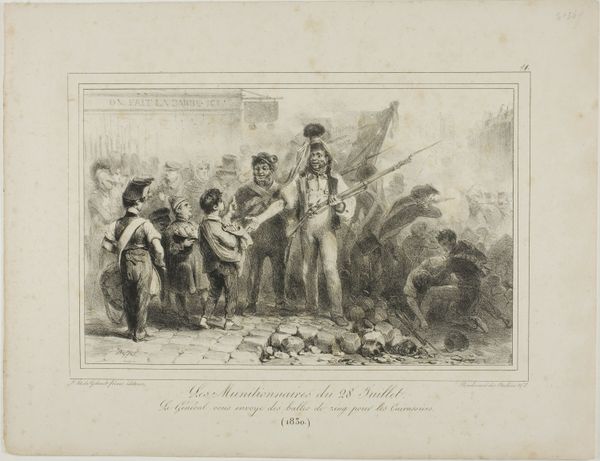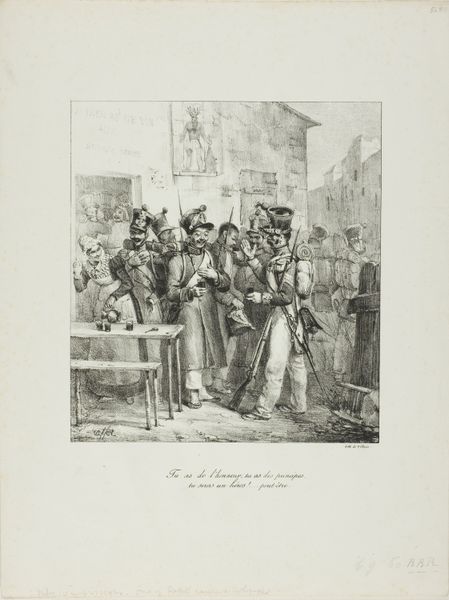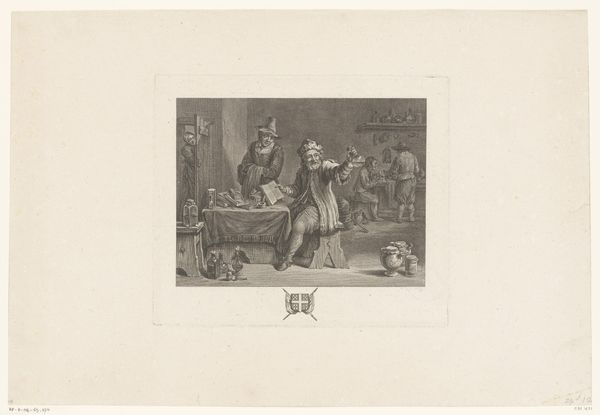
drawing, lithograph, print, paper
#
drawing
#
narrative-art
#
lithograph
# print
#
caricature
#
paper
#
romanticism
#
france
#
history-painting
Dimensions: 171 × 215 mm (image); 276 × 365 mm (sheet)
Copyright: Public Domain
Auguste Raffet created "The Archbishop Was Always a Rogue," an undated lithograph, using a method that democratized image production in the 19th century. Lithography, unlike traditional engraving, relies on the chemical repulsion of oil and water. The artist draws on a stone or metal plate with a greasy crayon, then treats the surface so that ink adheres only to the drawn areas. This allows for a more direct, painterly approach, evident in the fluid lines and tonal variations of Raffet's print. The scene depicts soldiers ransacking a room, a chaotic commentary on power and authority. Lithography's relative ease and affordability meant that such images could be widely distributed, influencing public opinion and challenging social norms. The medium itself became a tool for political expression, mirroring the upheaval depicted within the artwork. Raffet’s choice of lithography underscores the importance of accessible art forms in engaging with pressing social issues, blurring the lines between fine art and popular culture.
Comments
No comments
Be the first to comment and join the conversation on the ultimate creative platform.
